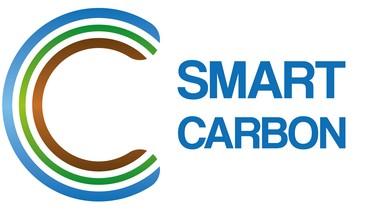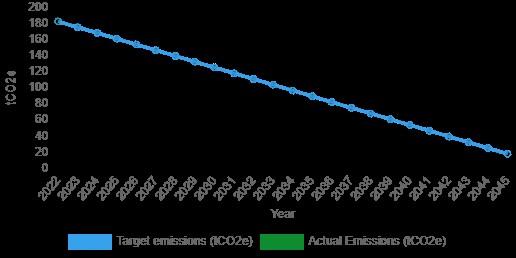

PPN 06-21 Carbon Reduction Plan
Publication date: 25/03/2025
Carbon footprint report for GSS Architecture 01 July 2023 to 30 June 2024
Supplier name: GSSArchitecture
GSSArchitecture provides full range of Architecture and Design services covering strategic master planning, new build, remodelling and repurposing. We can demonstrate experience in almost every sector including industrial and commercial, education, leisure, residential and healthcare.
Commitment to achieving Net Zero
GSSArchitecture is committed to achieving Net Zero emissions by 2045 and Carbon Neutral by 2030.
Baseline Emissions Footprint
Baseline emissions are a record of the greenhouse gases that have been produced in the past and were produced prior to the introduction of any strategies to reduce emissions. Baseline emissions are the reference point against which emissions reduction can be measured.
GSSArchitecture has assessed its greenhouse gas (GHG) emissions in accordance with the Greenhouse Gas Protocol –Corporate Accounting and Reporting Standard using emissions factors from UK Conversion factors and international electricity emissions factor
Baseline Year July 2022 to June 2023
Carbon reduction: GSSArchitecture carbon reduction plan aims to reduce carbon emissions by 90% before offsetting the rest 10%.



Compared to base year, the current overall emissions increased by 12%. However, turnover based intensity have reduced by 3%.
2. UK
emissions and energy use data for period 01 July 2023 to 30 June 2024

Table 1. GHG emissions summary
Table
GHG





Adjustments
*Notes: For 01 July 2023 to 30 June 2024 the number of Full-time equivalent employees (FTE) was 71 and the Turnover was GBP £6,093,400


Energy efficiency measures taken
GSSArchitecture has commenced the following measures:
Project: 1 All company cars are to transition to full electric vehicles
Project: 2 All vehicle mileage is tracked and where public transport is utilised we have introduced a method of tracking the ‘saved mileage’
Project 3: We have introduced recycling bins to all office locations through our existing Champions
Project 4: We have targeted mileage reduction through centralisation of internal meetings with a split of Partners meetings between our Leeds and Kettering offices
Project 5: Conduct a practice wide survey to understand the barriers to choosing active or public transport options for commuting or business
Project 6: GSSArchitecture have already implemented a series of sustainability and net zero workshops across practice to reduce our carbon impact on our design projects, including investment in carbon analysis software within the practice.
We are currently reviewing the carbon reduction initiatives to determine the trajectory of the NetZero journey and in the future we hope to implement further measures.
Energy efficiency planned
GSS Architecture plan to implement a series of projects:
Project 1: Switching all energy suppliers to ‘Green’ Tariffs
Project 2: GSSArchitecture will complete a strategic review of our office locations. Where leases are due to expire, we will review any potential to relocate to more sustainable premises in terms of thermal performance and location to more sustainable locations.
Project 3: GSSArchitecture will implement questions within our supplier PQQ to determine the suitability of our supply chain and their efforts to both record and then decarbonise.
Project 4: Undertake a series of energy improvements to our Kettering office including Window replacements and energy efficient lighting upgrades
Project 5: Offer a salary sacrifice Public Transport pass option for all employees
Project 6: Complete 3rd year of monitoring then undertake a modelling exercise with Smart Carbon to test scenarios of Carbon Reduction and then set dates to implement the chosen Future Projects


This Carbon Reduction Plan has been completed in accordance with PPN 06/21 and associated guidance and reporting standard for Carbon Reduction Plans.
Emissions have been reported and recorded in accordance with the published reporting standard for Carbon Reduction Plans and the GHG Reporting Protocol corporate standard and uses the appropriate Government emission conversion factors for greenhouse gas company reporting.
Scope 1 and Scope 2 emissions have been reported in accordance with SECR requirements, and the required subset of Scope 3 emissions have been reported in accordance with the published reporting standard for Carbon Reduction Plans and the Corporate Value Chain (Scope 3) Standard.
This Carbon Reduction Plan has been reviewed and signed off by the Partners of GSSArchitecture).
Signed on behalf of the Supplier:

Simon Rennison-Rae Ba(Hons) DipArch RIAS RIBA Partner
GSSArchitecture
Date: 25th March 2025


Definitions:
Carbon footprint - The total set of greenhouse gas emissions (GHG) caused directly and indirectly by an individual event, organisation, or product expressed as Carbon Dioxide Equivalent (CO2e). (Source: Greenhouse Gas Protocol).
Scope 1 (direct emissions) emissions are those from activities owned or controlled by your organisation. Examples of Scope 1 emissions include emissions from combustion in owned or controlled boilers, furnaces and vehicles; and emissions from chemical production in owned or controlled process equipment.
Scope 2 (energy indirect) emissions are those released into the atmosphere that are associated with your consumption of purchased electricity, heat, steam and cooling. These indirect emissions are a consequence of your organisation’s energy use, but occur at sources you do not own or control.
Scope 3 (other indirect) emissions are a consequence of your actions that occur at sources you do not own or control and are not classed as Scope 2 emissions. Examples of Scope 3 emissions are business travel by means not owned or controlled by your organisation, waste disposal, materials or fuels your organisation purchases. Deciding if emissions from a vehicle, office or factory that you use are Scope 1 or Scope 3 may depend on how you define your operational boundaries. Scope 3 emissions can be from activities that are upstream or downstream of your organisation. More information on Scope 3 and other aspects of reporting can be found in the Greenhouse Gas Protocol Corporate Standard.
References:
1. The GHG Protocol Corporate Accounting and Reporting Standard. Revised Edition (2015) World Resource Institute and World Business Council for Sustainable Development.
2. Environmental Reporting Guidelines: Including streamlined energy and carbon reporting guidance (March 2019) UK Government Department for Business, Environment and Industrial Strategy.
3. SmartCarbon Calculator: https://www.smartcarboncalculator.com/
4. Greenhouse gas reporting: conversion factors - Full set (for advanced users). More at this link:


Scope Percentage 01 July 2023 to 30 June 2024


Emissions Categories Percentage 01 July 2023 to 30 June 2024
Electricity: 12
Scope 1 Business travel - fleet: 10.34
Scope 1 F-gas: 0
Scope 1 Natural Gas: 1.39
Scope 3 Business travel - grey fleet: 13.26
Scope 3 Business travel - other: 0.27
Scope 3 Employee commute: 33.9
Scope 3 WTT: 18.49
Supply Chain: 8.4
Upstream transportation & distribution: 0
Waste disposal: 0.01
Water: 0.05
Working from Home: 1.88


Scope 01 July 2023 to 30 June 2024

